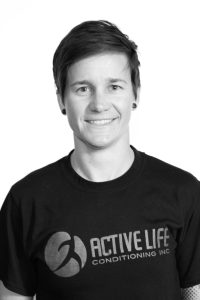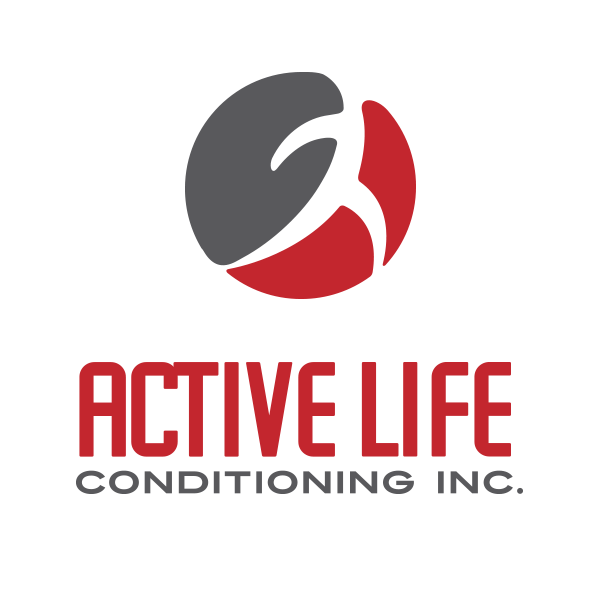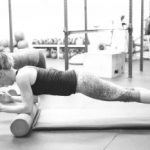Nutrition Unique to Women- Jess Gjertsen
Women’s Cycling Night ACL

Jessica Gjertsen
Registered Holistic Nutrition Consultant
The Menstrual Cycle
- This is our Physiological difference that separates us from Men.
- Our cycles have profound effects impacts on our mood and fertility but also greatly impact training and performance.
- Using informed nutrition and exercise guidelines you can master/manage/take control of your cycle and performance.
“Women are not small Men” Stacy Sims, PhD
Hormones
What are they?
- They are the body’s chemical messengers between your organs and the brain and brain to organs.
What do they do?
- They tell us what to eat, when to sleep, when to grow, control our appetite, sex drive, emotions, recovery, what we use as fuel, etc.
Puberty
Menstrual cycle begins
- Body changes happen; hips, breasts, fat accumulation due to estrogen increases and lipoprotein lipase an enzyme responsible for taking free fatty acids from the blood and depositing them into fat tissue. Women tend to carry most of our lean mass in our lower body.
- Estrogen inhibits anabolic stimuli making it harder to build muscle
- Estrogen increases bone growth in puberty
- In Women we typically see shorter stature, lower total body mass, increased fat mass as essential fat (12-30%) and lean mass in the lower body, higher percentage of fat compared to Men (5-25%)
- Many teenage girls leave sport due to these challenges; mental, emotional, awkwardness, eating disorders/body dysmorphia, poor performance, lack of knowledge, coping strategies, social media influences. RED-S/ Female Athlete Triad
Testosterone Increases in Males
- Increased Bone formation of larger bones
- Increased protein synthesis (muscle building) resulting in more muscle mass
- Erythropoietin secretions increase results in increased red blood cell production
Unique Female Differences
- Women are naturally good fat burners. This is great aerobically and with endurance activities, but you will need stored Glycogen/glucose available to access when you push into hard intensities. Anaerobic exercise increases our need for glucose (carbs)
- Smaller heart/heart volume
- Smaller lungs (25-30%)
- Lower diastolic pressure/ Lower max heart rate, lower VO2 max (15-25%)
- We pump less oxygenated blood with each beat which means we breathe more often. Our respiratory muscles must work harder and use a lot more energy
- Dehydration exercising in heat is higher, especially in our high hormone phase. We also sweat out more sodium and retain less
- More likely to dip into muscles at high effort, even more so with a calorie deficit
- Recovery is harder in a high hormone phase as we spare glycogen. We need glycogen/glucose for recovery and repair processes
- We burn more fat during exercise (not exclusively) then shift to more Glucose/carbs in recovery mode. Men are opposite.
The Menstrual Cycle
(simplified)
28-35 days in length-ish
Broken down into two 14 days phases
Cycle begins the first day of your period
Day 1-14 Follicular Phase or LOW Hormone Phase
Day 15-28 Luteal Phase or HIGH hormone Phase
Middle is Ovulation
- Day 1 your period begins.
- After day 5 or 6 Estrogen ramps up, Follicle stimulation hormone (FSH) also increases to stimulate follicles and mature eggs.
- Day 12 Estrogen Surges along with Luteinizing Hormone (LH) to mature eggs and trigger ovulation
- Estrogen dips, then rises again shortly after ovulation
- Day 15-28 Luteal phase hormones ramp up, progesterone increases higher than estrogen to prepare the uterus for implantation. **both estrogen and Progesterone PEAK at about 5 days before menstruation HELLO PMS, bloating, mood….
- Vasopressin also increases which acts to regulate fluid in your body. We retain water, blood vessels become constricted and there is an overall decrease in plasma volume. When plasma volume is low our blood is thicker and less is pump out per beat = exercise is harder
- Progesterone increases and competes for receptors with Aldosterone, aldosterone decreases, and this results in LESS SODIUM retention.
- These together = Reduced Cardiac output and decreased blood pressure which will make exercise feel MORE CHALLENGING
- If pregnancy does not occur our bodies RELAX. All the energy systems responsible for hormone production also relax. They are at their best to support exercise and perform
Okay but what does it all mean??????
Effects of Hormone phases on Exercise metabolism
Low Hormone Phase vs. High Hormone Phase
There are distinct differences in the fuel we burn, what we spare, plasma volume levels, heat tolerance and mood between phases due to hormonal fluctuations.
LOW Hormone Phase Day 1-14
- Begins Day 1 (period) *Estrogen and progesterone start LOW
- Ideal phase for strength gains
- Less pain sensations
- Recovery is faster
*Most studies demonstrate a lower performance in the Premenstrual phase and higher during menstrual period.
- Exercise will feel easier
- Take caution with heavy bleeding and check for anemia if performance declines
HIGH Hormone Phase Day 15-28 ish
- Estrogen and progesterone are HIGH
- Estrogen makes our bodies SPARE GLYCOGEN which is the storage form of Glucose. This is problematic with high intensities
- Delayed sweat response and heat tolerance due to reduced plasma volume + increased sodium loss + muscle breakdown (catabolism) are the main concerns that can be tackled nutritionally. Hydration is very important
- Both act on the hypothalamus in the brain which regulates your CNS. Regulates your pituitary gland, controls body temperature, thirst, hunger, homeostatic systems, sleep, lethargy, fatigue and low MOOD. **Perimenopausal women report a decrease in thirst sensations
- Plasma volume can drop (About 8%) having huge impacts on hydrating and cooling strategies
- Harder to perform high intensities and RECOVER from hard exercise in this phase. Especially when experiencing PMS leading into your period.
- You can offset many unwanted side effects of high hormones with Nutritional interventions, specific timing of PROTEIN, and HYDRATING correctly
- Estrogen turns DOWN the anabolic (building) capacity of muscles
- Progesterone increases CATABOLISM (the breakdown) of muscle. More difficulty accessing amino acids
- High Estrogen and Progesterone combined with hard-intensities results in higher rates of muscle breakdown. It is important for females to focus on BCAA’s (leucine, isoleucine, valine) and protein high in LEUCINE. These three essential amino acids compose 1/3 of our muscle tissue.
- Consuming proper nutrition BEFORE exercise and replenishing AFTER exercise can COUNTERACT these hormonal influences. Aim within 30 minutes following. Whey, BCAA’s, or Real food*
- High estrogen turns down our carb-burning ability and increases fat burning and free fatty acid availability. Which is great in the case of endurance/aerobic activities but creates a challenge for Anaerobic or HARD intensities. You will have to increase carbohydrates/glucose in our daily diet and consider supplementation with real food
- We crave more carbs during the High hormone phase for a reason…
Important points to Consider
*VO2Max and Lactate Threshold remain constant throughout our cycles. We do see a decline with age.
*During the Premenstrual and menstrual phase, we see a reduction in reaction time, neauromuscular coordination, breathing rates, and thermoregulation. Some athletes even show a slight decrease in Aerobic capacity. This would be something to consider with downhill riding or technical mountain biking, or sports where speed and agility are a large component.
*We are trainable. These points are here for your education, to learn how to adapt and plan. It also gives us some reason as to why some days are harder than others. Please do not view these as limitation, rather a cycle we need to work WITH.
Perimenopause & Menopause
- The transitional period before Menopause (5-10 years)
- Levels of Estrogen fluctuate then decline
- May experience menopause-like symptoms; hot flashes, irregular periods
- Most gain fat, lose muscle, challenge to stay lean
- Estrogen has a leading role in how we store fat and recover from training. We tend to see an increased accumulation of belly fat. This is primarily due to insulin insensitivity at a cellular level.
- Increased belly fat increases risks of insulin resistance, high triglycerides, fatty liver and cardiovascular disease in Females
- There is a ratio shift of protein synthesis (building) and muscle breakdown.
As Estrogen declines we see an INCREASE in protein synthesis (building). Then in post-menopause we see an INCREASE in the breakdown of protein which throws everything out of balance. The challenge lies when estrogen drops in post-menopausal women and we then become less reactive to muscle building stimulus from resistance training and consuming protein.
- Estrogens action increases insulin sensitivity at the cells. As it declines we see a rise of insulin resistance. Normally insulin is required to pull glucose into our cells to be used a energy to fuel activity. In peri and post menopause this insulin sensitivity can be problematic. As we become insulin resistant our body pump out more insulin to utilize glucose but also increases fat storage. Excess Glucose cannot remain floating around in our blood, we then convert it to fat and store it safely away in our cells.
- DHEA also drops in Perimenopause and Menopause. Its role is to limit the effects of cortisol by influencing glucose to be burned as fuel. As DHEA drops we see an increase in the stress hormone cortisol. This also increases the likelihood of excess glucose being converted to fat and stored in fat cells.
- Fructose is not well tolerated resulting in GI issues, bloating, cramping. Inability to break them down efficiently and results increased Free Fatty acids in the blood.
- Menopause can create permanent changes in nutrient metabolism unless you shift your nutrition to account for them.
- Goodbye sleep. Progesterone is our antianxiety hormone that has a sedative effect , as it drops our sleep suffers. Estrogen also increase REM sleep, and helps serotonin do its work. It also regulates our body temperature.
- Estrogen withdrawal results in a burst of GnRH that increases vasodilation to dump heat, via sweating and hot flash, then you shiver and warm back up. Poor sleep decreases performance and recovery.
- Melatonin, valerian, 5-HTP, magnesium, Black Cohosh
- Pre-cooling, hydration 1/16 tsp sea salt in 20 oz water
TAKE HOME POINT:
There must be a mindset shift on how you fuel your body. What may have worked in previous years likely won’t work anymore.
Nutritional recommendations Peri, Menopause and Post
- Do NOT go low carb
- What about Paleo (which is also low carb/high fat)? This is a fat-adaptation diet that aims to reduce CHO’s in the diet and increase fatty acid oxidation for fuel during exercise and increase intramuscular fat storage. This happens but our bodies are smart and adapts in the reduction of available glucose BUT it doesn’t translate into increased performance. Often performance at high-intensities and aerobic/anaerobic capacities suffer.
- What about KETO? Same as above. These should only be considered when blood glucose levels are outside of normal range. Insulin resistance, pre-diabetes, or diabetic.
- What about Intermittent Fasting? It depends. But don’t go low carb.
- Low carb diets= increased cortisol, increased catabolism of muscle, reduced protein synthesis, decreased immune function, and decreased performance.
- Blood pressure changes slow down resulting in slower vasodilation. Beta-alanine and N-O foods can enhance blood circulation during exercise. Sweating starts later.
- Heat tolerance is poor. Exercise caution in the heat (pun intended). Hydrate with cold fluids other cooling methods such as cold towels and cold showers/ submersion
- Greater sensitivity to carbs (not as tolerated) means you need less carbs overall
- Protein is used less-effectively/ supplement with 15 grams whey isolate or 9 grams BCAA’s 30 minutes before training. 25 grams whey isolate and casein with 30 mins of workout. Caution with soy protein as it lacks leucine which helps drive protein synthesis.
- Before bed try to have another 15 grams protein
- TRAIN FOR POWER as power production decreases with age and post- menopause. Both speed and strength of muscle contractions decline. They are essential to maintain or boost your overall performance.
Nutrition Recommendations
Everyday
- Eat Complete meals; protein, carbohydrates and fats at each meal
- Do NOT go low carb!! *When women drop to low in carbs we see a fall in estradiol and a rise in estrone (hormone our fat tissue secretes) which signals our body to store more fat. Stress hormone Cortisol also increases (progesterone is converted to cortisol) which also signals fat storage under stress. WE CONSERVE FAT in this scenario and our physiology conserves fat for famine to save our reproductive function. In Men, we see the opposite, they become lean (decrease fat mass), increase anabolic effects and increase testosterone.
- This is why young reproductive age and premenopausal women struggle with intermittent fasting, low-carb, and ketogenic diets. Again, We are not small men.
Peak performance during PMS -take for 5-7 days before your period
250 mg Magnesium glycinate
45 mg Zinc
80 mg aspirin
1-3 grams Omega 3 fatty acids
Pre-training in High Hormone Phase
Take 5-7 grams of BCAA’s to enhance mood, decrease the estrogen-progesterone effect on CNS fatigue
While Training
Consume more Carbohydrates per hour
High hormone phase; 0.45 grams of CHO/lb body weight/hr (61grams for 135 lb female)
Low Hormone phase; lower to 0.35-gram CHO/lb body weight/hour (47grams)
Post workout during High hormone phase
Due to the nature of progesterone being catabolic and its impacts on recovery (inhibition) aim to counteract this by consuming 20-25 grams protein within 30 minutes.
Tailwind rebuild, Metagenics BCAA’s, Poliquin intra-workout with beta-alanine
High Hormone Phase + High Intensity days
Increase workout Carbs to 40 grams + 10-15 grams Protein for 90+ mins of exercise
Increase workout Carbs to 40-50 grams plus + protein + fat per hour over 90 mins. EAT REAL FOOD not just a gel
High Hormone Hydration
There is an increase in core temperature as hormones ramp up combined with lower blood volume resulting in delayed sweating and our ability to cool ourselves. Progesterone also increases sodium loss increasing your risks of heat related illnesses.
Hydration goals are to keep your body-fluids high to get rid of heat produced while exercising.
Drink water with Salt. Water does a poor job of hydrating alone.
Commercial sport drinks such as Gatorade/powerade have a low level of sodium and electrolytes and a higher level of carbs. They supply sugar energy but due to their osmolarity they can work against you for hydration
Suggestions:
OSMO nutrition
Or make your own salted water 1/16 tsp sea salt per 20 oz water
7.7 grams sodium citrate and 4.5 grams sodium chloride per Liter
Drink 1 bottle of low-carbohydrate sport drink every hour (less than 9 grams CHO per 8 oz)
3-4% Carb solution (7-9.4 carb per 8oz) Ideally glucose or sucrose
180-225 mg Sodium
60-75 mg Potassium
Personal preference is Tailwind
Slightly higher Sugar at 5-8% or Dextrose and sucrose
Addition of magnesium
Addition of Caffeine in products (endurance efforts)
Premenstrual headaches
Caused by decreases in blood pressure and dilation and constriction of blood vessels. Stay hydrated and eat more Nitrogen Oxide rich foods such as beets, watermelon, and spinach. Beta-alanine
Dietary Guidelines
What you eat directly impact what you have in your tank
- Eat Protein, Carbohydrates and Healthy Fats at each meal.
- All Carbohydrates should be LOW glycemic and from complex carb sources (Ali). Vegetables, and fruits while reducing simple sugars, grains, breads, pasta and rice.
- Increase quality Protein
- Increase healthy Fats
Carbohydrates
- Muscle glycogen stores are used up in roughly 2 hours light-aerobic work or 15-30mins with high intensity efforts.
- The sensation of “hitting the wall” is a signal that you have used up all liver glycogen, you simply cannot continue at this level of intensity. The result is light-headedness, inability to concentrate, going “dark,” blurred vision, brain fog.
Light, lifting or non-training days 1.13-1.4 grams Carbs/lb/day
Moderate to high-intensity 60-120 minutes 1.6-1.8 grams of carbs/lb/day
Endurance training lasting 2 to 5 hours of intense training 2-2.7 grams/Carbs/lb/day
Protein
- Needed for muscle growth, repair, strength adaptations
- Amino Acids can help rehydrate
- Protein is needed to facilitate fat loss as it will help keep muscle rebuilding and repair
- Whey and casein are ideal (leucine content and Essential amino profile
Light, lifting, non-training days 0.75-0.8 grams/PTN/lb/Day
Endurance0.8-1.0
Strength & power training days 1.0-1.2 grams/PTN/lb/day
Recovery 25-30 grams Protein in the first half hour post session



